This post may contain affiliate sales links. Please read my disclosure policy.
Easter is just around the corner and there is nothing more impressive on your dining table than a beautiful one roasted lamb. Today I use a Boneless leg of lamb and I’ll show you step by step how easy it can be to crumble up tender lamb. Serve with my scalloped potatoes and some roasted asparagus and strawberry salad.
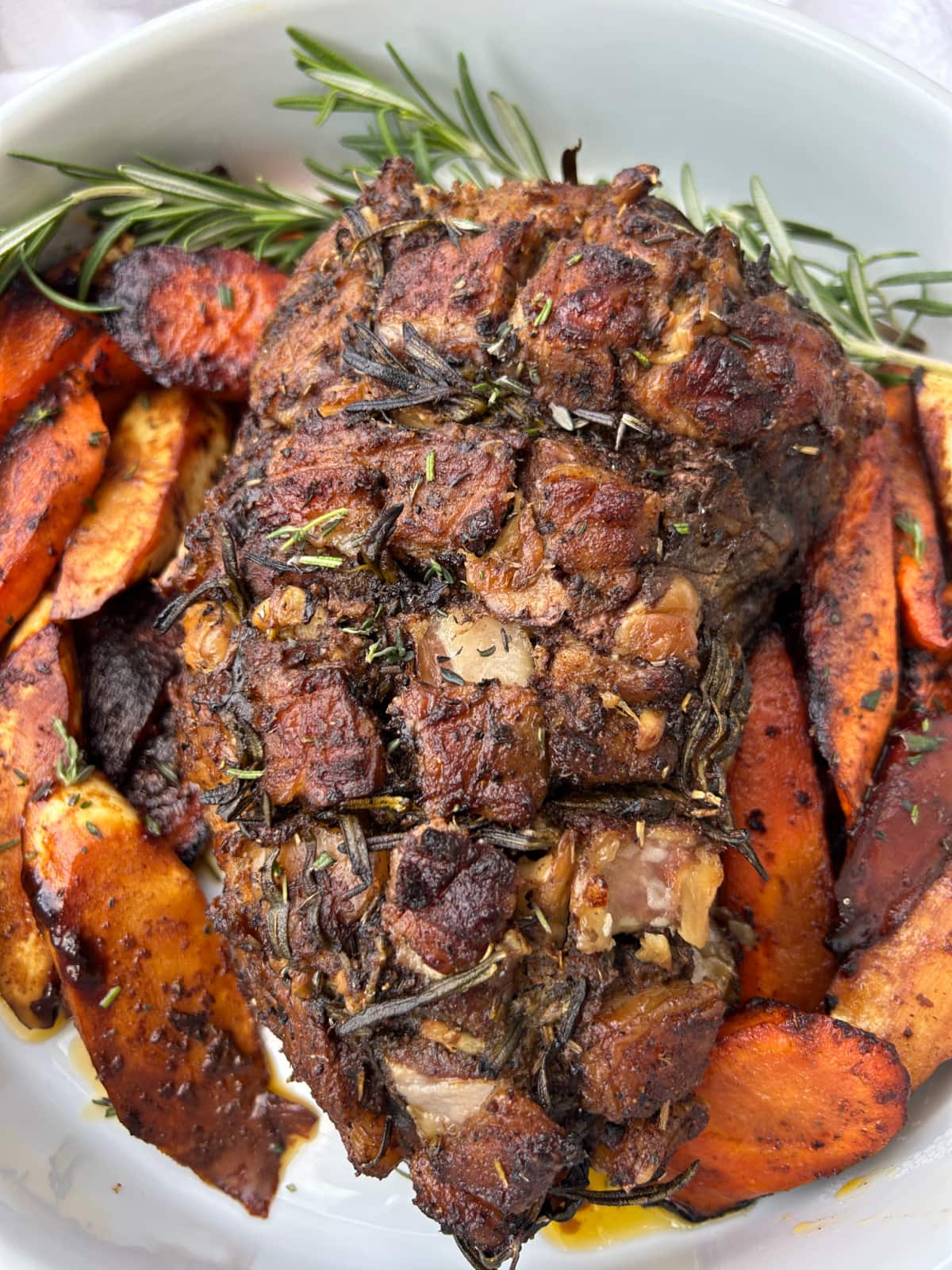
What is roast lamb?
As the name suggests, a boneless lamb roast is a piece of lamb that comes from the leg of lamb that has been boned out. This makes carving and serving easier and also allows for more even cooking. It has a rich, slightly wild flavor that is distinct from other meats such as beef or pork. Flavor can be affected by the spices and herbs used to cook the lamb. For this recipe I used garlic, rosemary, salt and pepper. I’ll be making this for Easter dinner this year, along with our favorite side dishes.
Boneless versus bone-in
While some will argue that bone-in lamb is the only option, I prefer boneless for a few reasons. A boneless leg of lamb is easier to carve and fits much better in the roasting pan. It also cooks faster and yields more meat. Boneless has a less intense flavor (lamb has more of a game flavor than beef or pork). The right seasoning and preparation are important to bring out the delicious flavors that lamb has to offer.
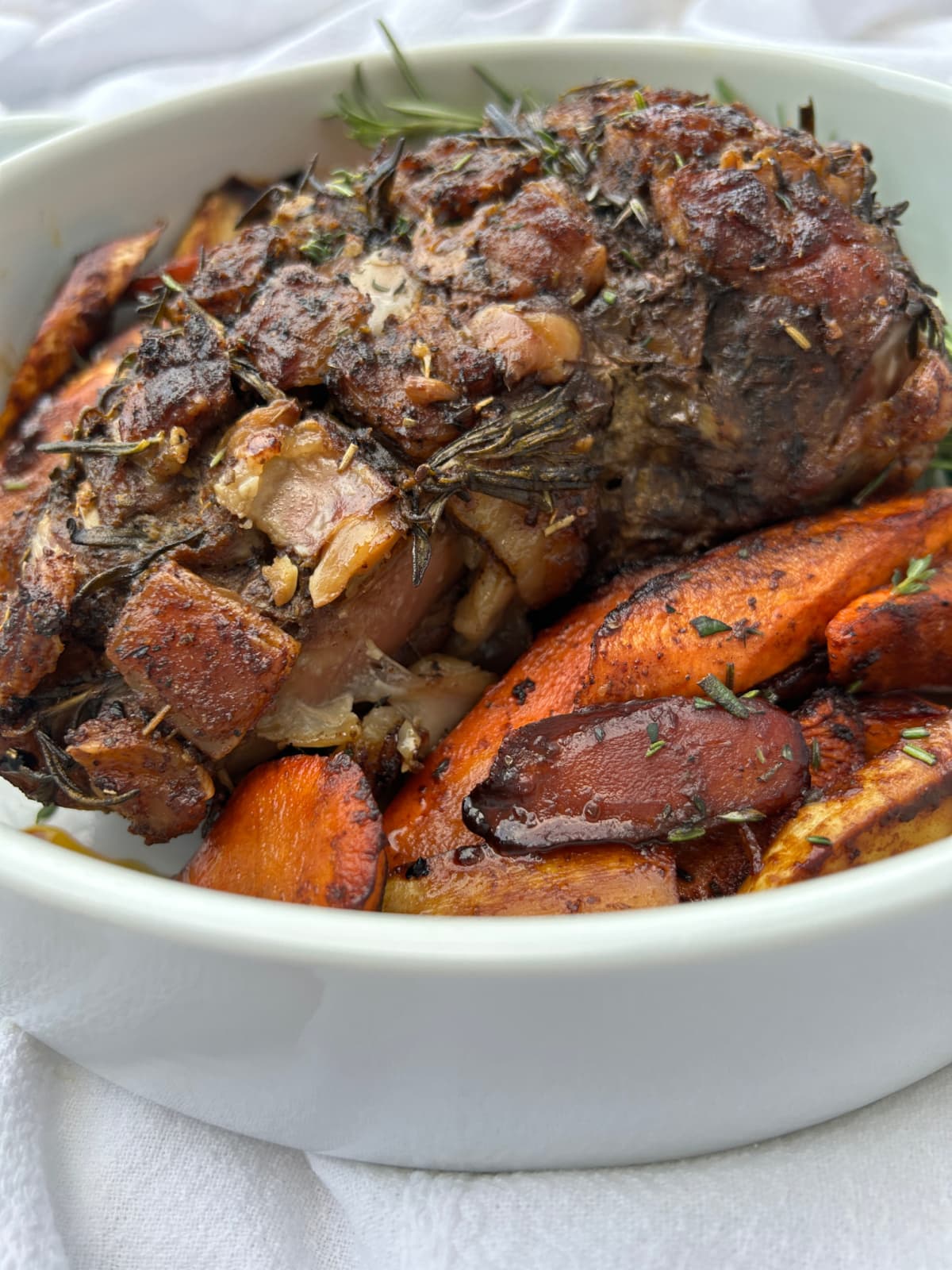
How to cook a boneless roast lamb
For full recipe details, including required ingredients and measurements, see the printable recipe card below. Here is step by step what to expect when preparing a roast lamb:
Preheat the oven + remove the packaging from the roast
Preheat oven to 325°F. I prefer a griddle like this one for this recipe. Removed roasted lamb out of the packaging and if necessary remove the stretchable thread net. Set the net aside for later use. Pat the lamb dry.
Score the fat side of the roast
Use a paring knife carefully Score the top of the meat (fat side) by cutting slits (deep enough for your garlic pieces) and form a uniform design (like a diamond pattern).
Rub oil and season
Rub roast olive oilthen generous Salt And pepper whole roast. Sprinkle with other desired spices. I used this Kirkland No-Salt Seasoning (which they seem to have discontinued for now – BOO!) which – well, has everything but salt and is AMAZING!! Season with all the herbs and spices your little heart desires. Lamb can handle almost anything.
Place the garlic and rosemary in the slits
Location coarsely chopped garlic pieces and then sprigs of rosemary in every slot. Add as much as you can depending on how many you have and how big they are.
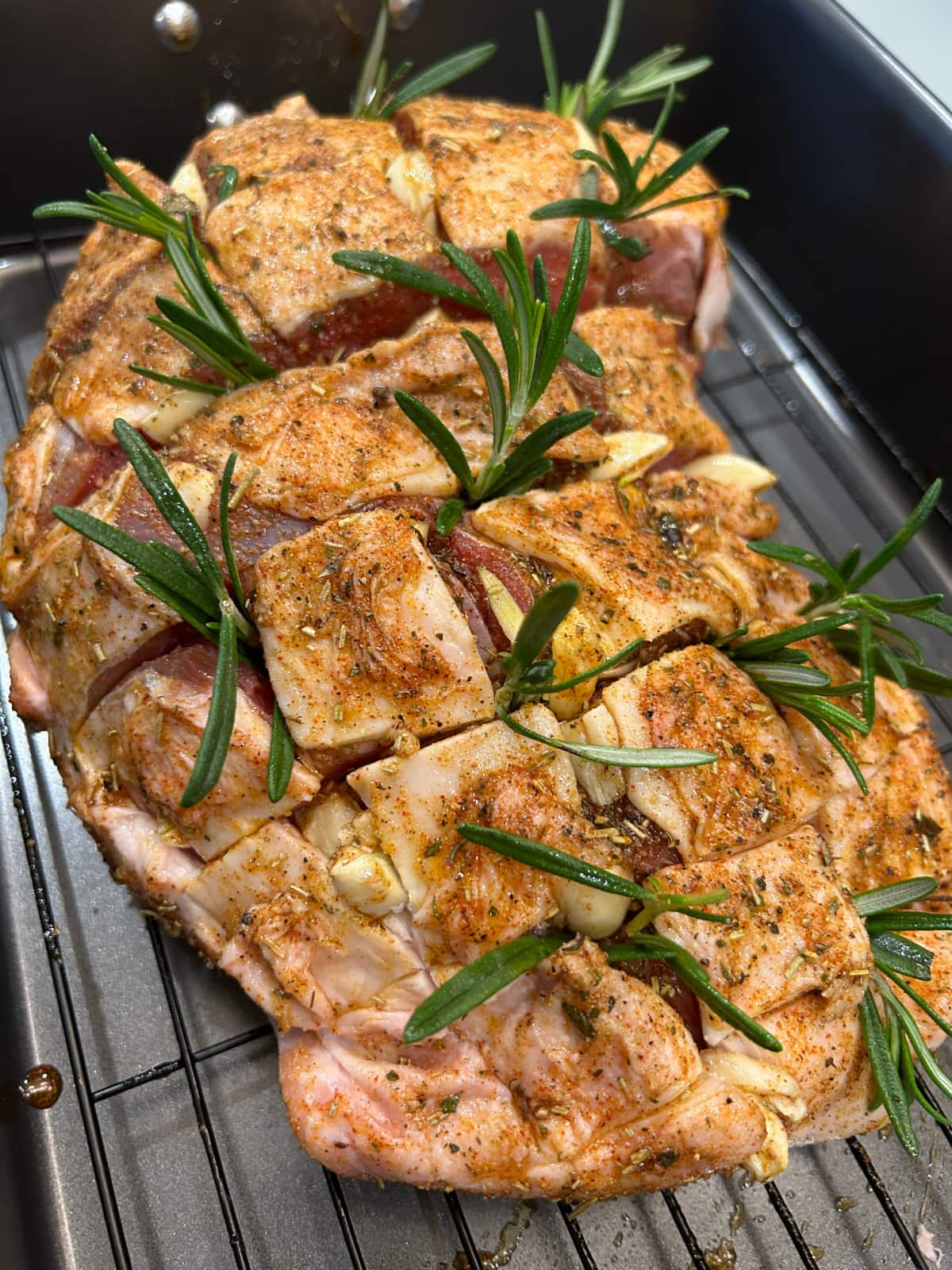
Put a net around the roast to keep the shape
Place carefully Tie the leg of lamb back with netting or tie with butcher’s twine to maintain its “roast” shape. Place the lamb directly on the rack of the roasting pan, fat side up.
Pour the chicken soup on the bottom of the roaster so that the juice does not burn.
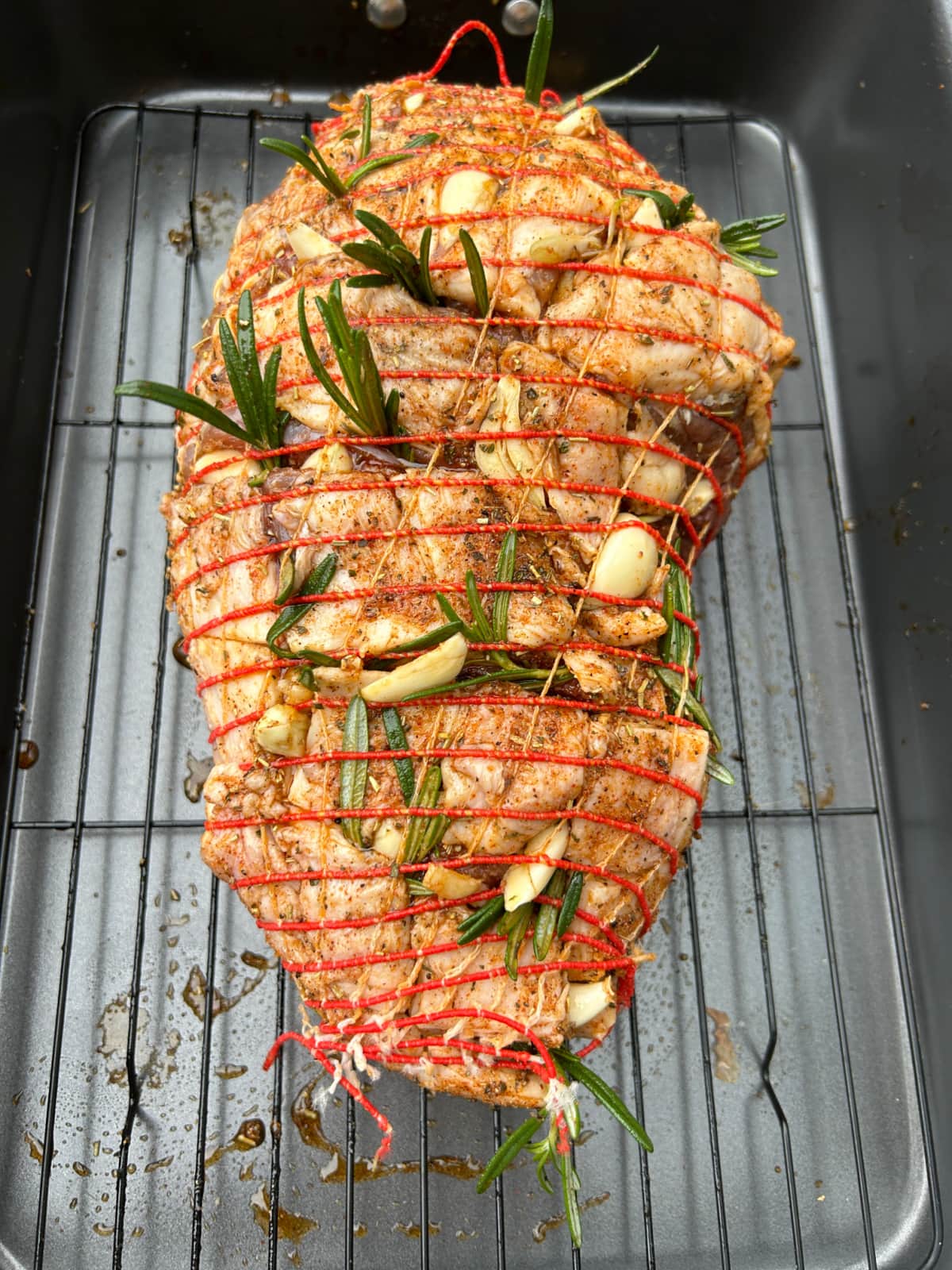
bake + leave to rest
Bake uncovered for approx. 2 hours* or until the internal temperature reaches 170°F.
*Bake for about 30 minutes per pound for crumbled tender results. Leave to rest for 15 minutes before chopping/slicing. Serve with pan juices.
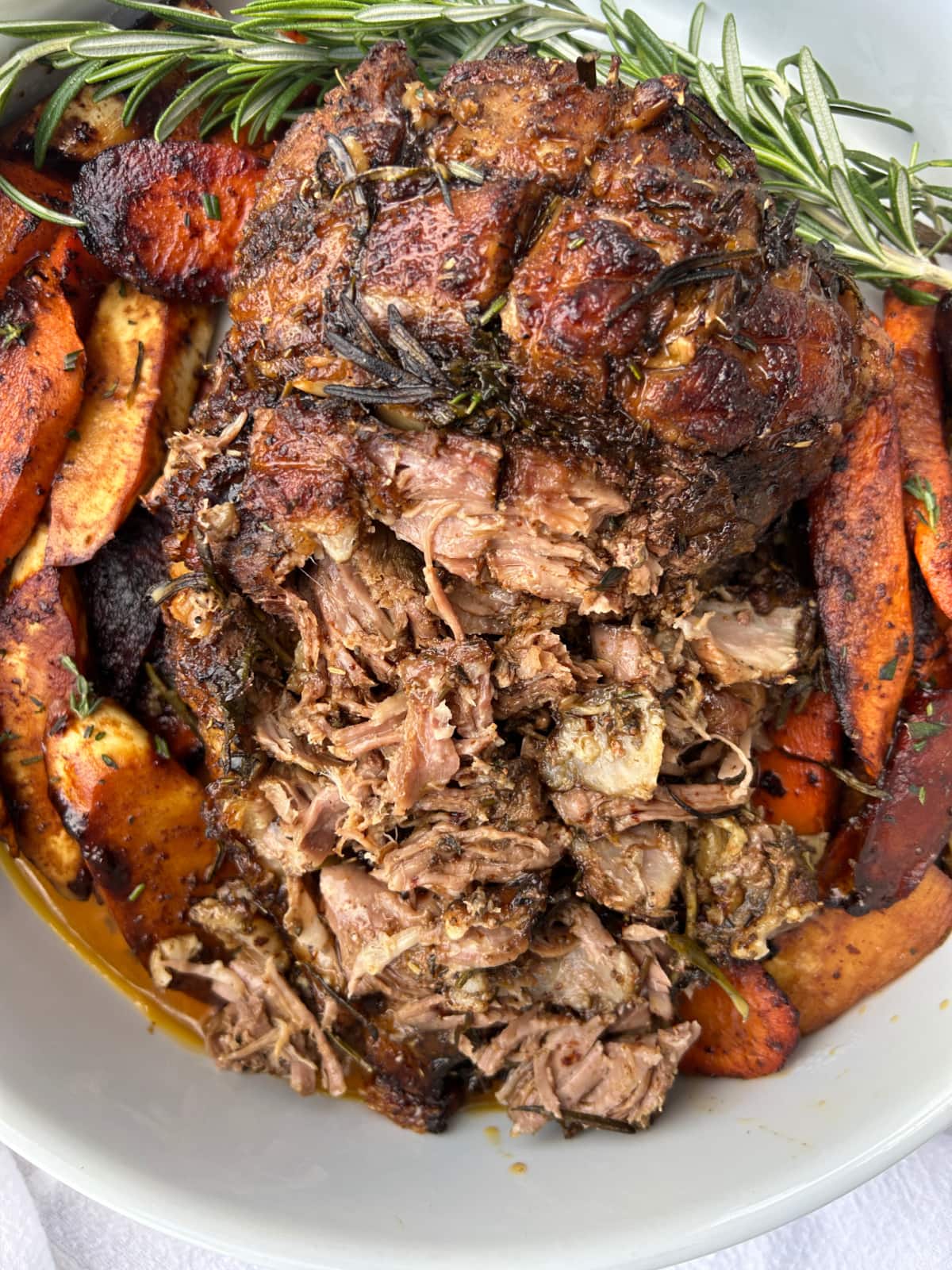
Internal cooking temperatures for a boneless lamb shank
It is important to cook the lamb shank to the correct temperature to ensure it is safe to eat and has the desired degree of doneness. While I prefer mine to be well done and fall apart, you might prefer something a little less finished. Here are the recommended cooking temperatures for the boneless lamb shank:
- Rarely: 52°C (125°F) – 54°C (130°F)
- Medium-rare: 130°F (54°C) – 135°F (57°C)
- Medium: 57°C (135°F) – 60°C (140°F)
- Medium: 63°C (145°F) – 66°C (150°F)
- Well done: 66°C – 71°C
It is important to note that these temperatures are a guide only and may need to be adjusted depending on the size and shape of the lamb roast and the degree of doneness desired. It’s always best to use a meat thermometer to check the internal temperature of the roast lamb to ensure it’s cooked to your liking. Remember to let the lamb rest for 10-15 minutes before carving to allow the juices to disperse and make carving easier.
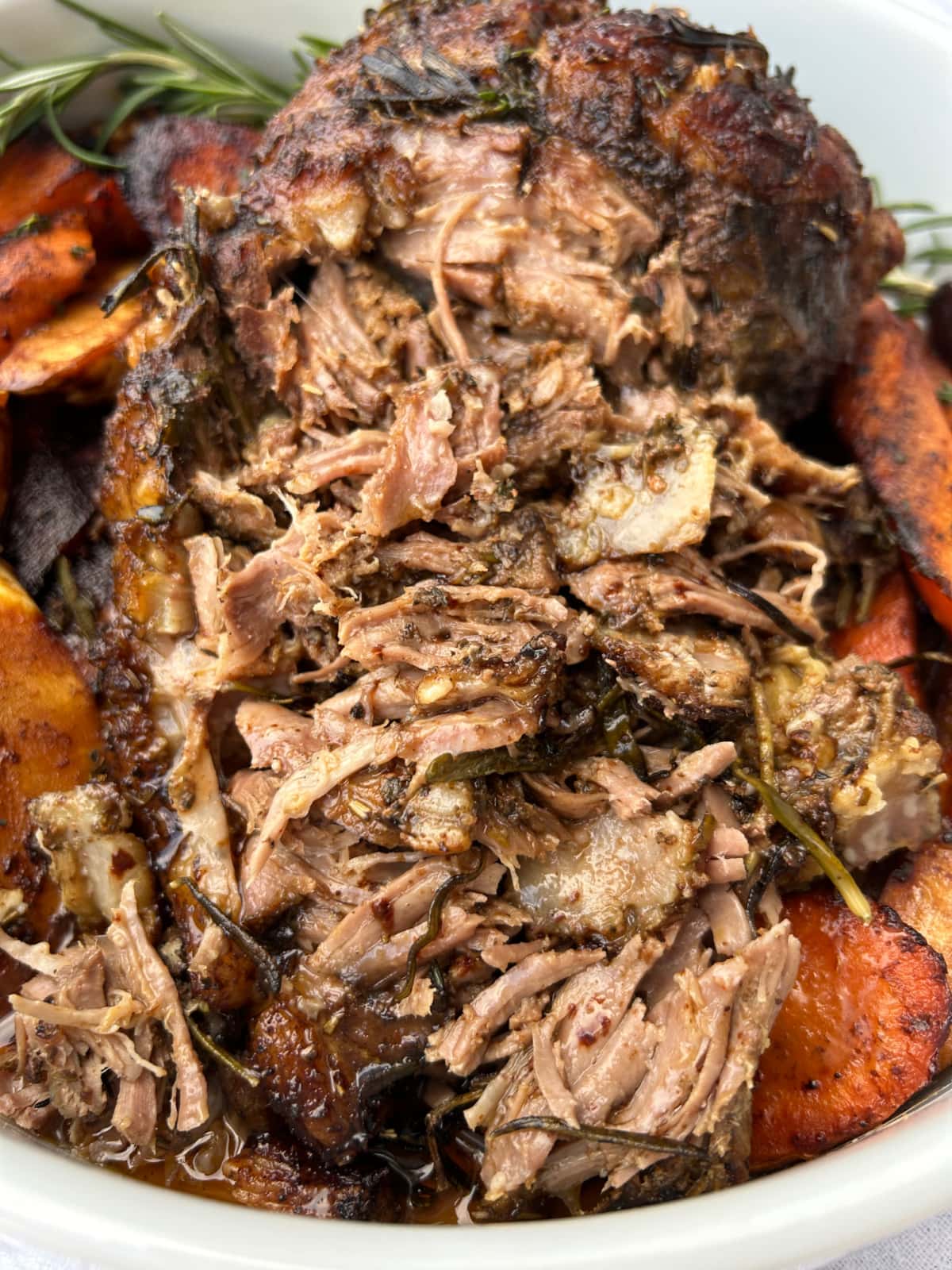
Make Ahead + save instructions
Get ahead: To save time on a busy cooking day, you can stuff and season the roast, cover and refrigerate for 24 hours. Then let it come to room temperature and bake according to the recipe.
Refrigerate leftover roast lamb: Allow to cool completely. Store whole or cut up in an airtight container up to 5 days.
Freeze: Freeze pulled apart or sliced leftovers in an airtight container Up to 3 months. Thaw in the fridge, then use leftovers as protein in a salad or sandwich on the go.
More Easter Dinner Recipes to Consider!
There you have it! Pretty easy, right? While the roast lamb is roasting, you have time to prepare side dishes! Have a wonderful day, friends! 🙂

roasted lamb
Easter is just around the corner and there’s nothing more impressive on your dining table than a beautiful roast lamb. Today I’m using a boneless lamb shank and showing you step by step how easy it can be to fall apart tender lamb.
instructions
-
Preheat oven to 325°F.
-
Remove the roast lamb from the packaging and remove the stretchable netting if necessary. Set the net aside for later use. Pat the lamb dry with a towel.
-
Using a paring knife, carefully score the top of the meat (fat side), cutting slits (deep enough for your garlic chunks) to create a uniform design (like a diamond pattern).
-
Rub whole roast in olive oil.
-
Generously salt and pepper the whole roast. Add herbs and spices of your choice (I used Kirkland No-Salt Seasoning).
-
Place roughly chopped garlic chunks in each slot.
-
Place sprigs of rosemary in as many slots as you can depending on how much you have/how big they are.
-
Gently re-tighten the netting around the leg of lamb or tie with butcher twine to retain the shape of the roast.
-
Place the lamb directly on the roasting pan, fat-side up.
-
Pour the chicken broth onto the bottom of the roaster to prevent the juice from burning.
-
Bake uncovered for about 2 hours* or until the internal temperature reaches 170°F. * Bake for about 30 minutes per pound for crumbled tender results.
-
Leave to rest for 15 minutes before chopping/slicing. Serve with pan juices.
Nourishment
Calories: 347kcal | Carbohydrates: 2G | Protein: 45G | Fat: 17G | Saturated Fatty Acids: 4G | Polyunsaturated fat: 2G | Monounsaturated fatty acids: 9G | Cholesterol: 138mg | Sodium: 2096mg | Potassium: 657mg | Fiber: 0.4G | Sugar: 0.3G | Vitamin A: 10ie | Vitamin C: 1mg | Calcium: 28mg | Iron: 4mg

